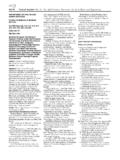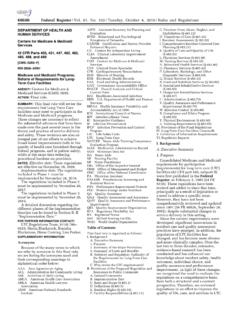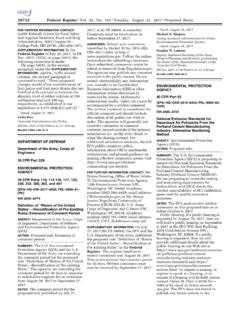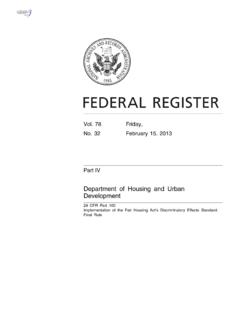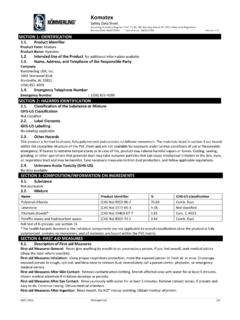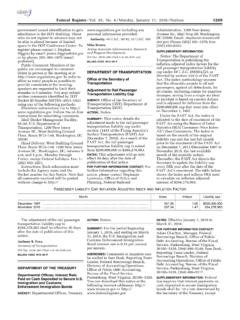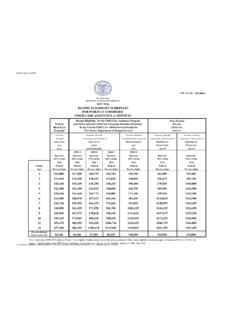Transcription of COMMUNITY DEVELOPMENT & REVITALIZATION …
1 TEXAS GENERAL LAND OFFICE COMMUNITY DEVELOPMENT & REVITALIZATION PROCUREMENT GUIDANCE FOR SUBRECIPIENTS UNDER 2 CFR PART 200 (UNIFORM RULES) The Texas General Land Office COMMUNITY DEVELOPMENT & REVITALIZATION (GLO-CDR) is the state agency designated by the Governor and responsible to the Department of Housing and Urban DEVELOPMENT (HUD) for the grant administration of this funding, herein referred to as the grantee . Eligible applicants (city and county governments) located within, or performing activities within the Texas counties as declared in DR- 4223 and/or DR-4245, are herein referred to as subrecipient and are the desired audience of the guidance. This guidance is designed to help make better use of your COMMUNITY DEVELOPMENT Block Grant Disaster Recovery (CDBG-DR) resources and to avoid common procurement pitfalls in managing your grant.
2 The procurement checklist will assist subrecipients of CDBG-DR funds provided by HUD to comply with the federal procurement requirements and reasonably ensure the allowability of eligible program expenses. This checklist is intended to provide general guidance only and does NOT provide a detailed explanation of the federal procurement requirements it is not intended to serve as legal advice and GLO-CDR makes no guarantee that adherence to this checklist will result in full reimbursement of eligible expenses. To understand the requirements fully, the user should review the provisions of 2 CFR 326 and Appendix II to Part 200, which are the source of these requirements. Contact your servicing attorney or legal counsel with any questions on the application of these standards. Our guidance is limited to the content within 2 CFR 326 and Appendix II to Part 200.
3 Grant Administrator and Engineer Procurement GLO-CDR will allow a subrecipient to use a single vendor to both assist in the preparation of an application and to perform work under the grant. The vendor procurement should clearly identify preparation of an application and grant administration services within the solicitation document. The solicitation must take place prior to the initiation of the application process and comply with 2 CFR Procurement File Maintenance The Procurement Checklist must be filled out per the prescribed procurement methodology used for each solicitation. This checklist must be maintained with each procurement file. Subsequent sealed bid or competitive proposal procurement activities will require the following documents be submitted to GLO-CDR: Procurement Checklist RFP/RFQ as applicable Listing of Bid Proposals/Summary of Scoring Criteria Grantee approval of selected vendor/winning bid Contract GLO-CDR PROCUREMENT CHECKLIST 2 April 11, 2018 Ver These documents must be provided to identify the actions taken to ensure procurement activities.
4 GLO-CDR will not review or approve the compliance of procurement activities as they occur. GLO-CDR is available to provide technical assistance during the phases of the procurement process. Note: Non-competitive or sole-source procurements require notification to and authorization by GLO-CDR. Monitoring Monitoring reviews to determine procurement compliance are performed independently of the process noted above as part of GLO-CDR s Subrecipient Monitoring Plan. GLO-CDR will monitor to the standards of 2 CFR or state or local procurement law and policies if they are more restrictive. Criteria Sections 22 Procurement of the Federal Register, Vol. 81, No. 117 (June 17, 2016) for the 2015 allocations of Public Law 114 113 and Federal Register, Vol. 81, No. 224 (November 21, 2016) for the 2016 allocations of Public Law 114 223 and 245, combined with 24 CFR Part 570, direct the state to establish requirements for policies and procedures for units of general local government based on full and open competition ( , small purchase, sealed bids/formal advertising, competitive proposals).
5 GLO-CDR has established that subrecipients must follow the procurement methods as outlined in 2 CFR This includes the requirement to follow state and local procurement law and policies as prescribed by 2 CFR (a) as well as the additional requirements stated in 2 CFR Part 200. Subrecipients should update local procurement policies and procedures to correspond with the procurement and contract requirements of 2 CFR for CDBG-DR funding. GLO-CDR PROCUREMENT CHECKLIST 3 April 11, 2018 Ver PROCEDURES STANDARDS AND GUIDANCE FOR SUBRECIPIENTS (Section 1) General procurement standards Task Yes No N/A Notes Do you maintain documented policies and procedures that reflect applicable state, local, and tribal laws and regulations and provide that they conform to applicable federal law and the standards identified in this part?
6 (a) Do you maintain contract oversight to ensure that contractors perform in accordance with the terms, conditions, and specifications of their contracts or purchase orders? (b) Do you maintain a written standard of conduct addressing a real or apparent conflict of interest, both direct and indirect, and governing the actions of employees engaged in the selection, award, and administration of contracts to ensure conflicts of interest are identified, substantiate nominal financial interests or value, and disciplinary actions for violations of the standards? (c) Do you avoid acquisition of unnecessary or duplicative items? Consideration should be given to consolidating or breaking out procurements to obtain a more economical purchase. (d) Is the contract being awarded to a responsible contractor possessing the ability to perform successfully under the terms and conditions of the proposed procurement, considering such matters as contractor integrity, compliance with public policy, record of past performance, and financial and technical resources?
7 (h) and (Suspension and Debarment) Did you determine no other contract other than time and materials type1 contract is suitable, and include a price ceiling that if exceeded, the contractor exceeds at their own risk? (j) Do you have more oversight being asserted for time and material contracts to obtain reasonable assurance that the contractor is maintaining efficient methods and effective cost controls related to price ceiling related risks? (j) Do you responsibly resolve any related protests, disputes, or claims arising out of procurements? (j) 1 A time and material's contract is defined as the sum of (i) the actual cost of materials and (ii) direct labor hours charged at fixed hourly rates that reflect wages, general administrative expenses, and profit. GLO-CDR PROCUREMENT CHECKLIST 4 April 11, 2018 Ver PROCEDURES STANDARDS AND GUIDANCE FOR SUBRECIPIENTS (Section 2) Competition Task Yes No N/A Notes Procurement transactions cannot be conducted in a manner that does not provide full and open competition.
8 Does the procurement involve any of the following? (a) Placing unreasonable requirements on firms for them to qualify to do business? Requiring unnecessary experience and excessive bonding? Noncompetitive pricing practices between firms or between affiliated companies? Noncompetitive contracts to consultants that are on retainer contracts? Organizational conflicts of interest? Specifying only a brand name product instead of allowing an equal product to be offered and describing the performance or other relevant requirements of the procurement? Any arbitrary action in the procurement process? Was the contractor that is bidding on the contract also involved with developing or drafting the specifications, requirements, statement of work, invitation for bids or request for proposals? (If so, that contractor must be excluded from competing for such procurements) (a) Note: Procurement MUST be conducted in a manner that prohibits the use of statutorily or administratively imposing state or local geographical preferences in the evaluation of bids or proposals.
9 Do you have written procurement procedures that ensure that all solicitations comply with the following? (c) Incorporate a clear and accurate description of the technical requirements for the material, product, or service to be procured? Identify all requirements which the offerors must fulfill and all other factors to be used in evaluating bids or proposals? If you are using a prequalified list of persons, firms, or products to acquire goods and services, did you consider the following? (d) Is the list current? Does the list include enough qualified sources to ensure maximum open and free competition? Were any potential bidders precluded from qualifying during the solicitation period? GLO-CDR PROCUREMENT CHECKLIST 5 April 11, 2018 Ver PROCEDURES STANDARDS AND GUIDANCE FOR SUBRECIPIENTS (Section 3) Method of Procurement Task Yes No N/A Notes Which of the following acceptable methods of procurement are you using?
10 Micro-purchase procedures2 (a) To the extent practicable, are you distributing micro- purchases equitably among qualified suppliers? Does the aggregate dollar of supplies or services exceed the micro-purchase threshold of $3,000, or $2,000 for construction contracts subject to the Davis- Bacon Act? Small purchase procedures3 (b) Did you obtain price or rate quotations from an adequate number of qualified sources? Sealed bids4 (c) Is a complete, adequate, and realistic specification or purchase description available for bidders? Are two or more responsible bidders willing and able to compete effectively for the business in relation to the bid advertisement? Can the procurement lend itself to a firm fixed price contract and the selection of the successful bidder be made principally based on price? Did you solicit bids from an adequate number of known suppliers, providing them sufficient response time prior to the date set for opening the bids?
